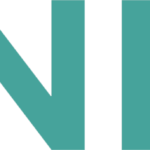We’re almost through the midway of 2020. Moving forward into another year we will see a drastic shift in the HR industry reflecting the way we work.
Even through the transitional shift, businesses expect to have a dynamic workforce. Doesn’t this call for optimism in the industry?
With the help of data analytics, it has become much easier for HR and talent management to analyze employee-related issues to improve business outcomes and make a better data-driven decision. Simply said, data analytics in HR is referred to as the factor where analytics is applied to the human resources function or programs.
We often come across words like talent analytics, people analytics, or workforce analytics. But what do they all mean?
These are terms that can be used interchangeably, although these topics can be debatable.
However, HR analytics is more inclined toward having a broader perspective of data, while talent analytics and people analytics generally indicates people and their behavior toward their work. Whereas, the term workforce analytics is preferred by people only because of the advent of automating tasks with the help of robots, which slightly can be referred to as part of the workforce.



Leave Your Comment